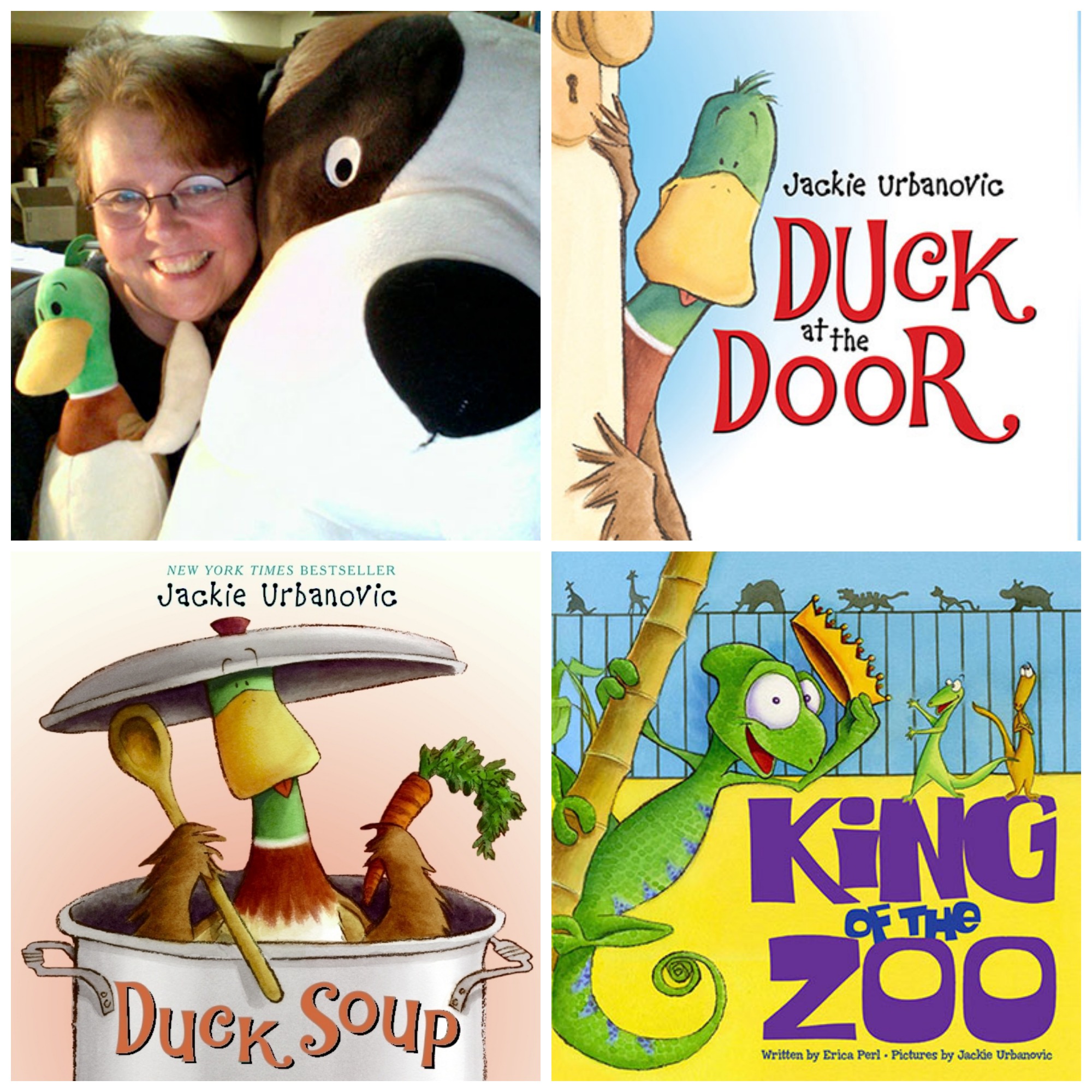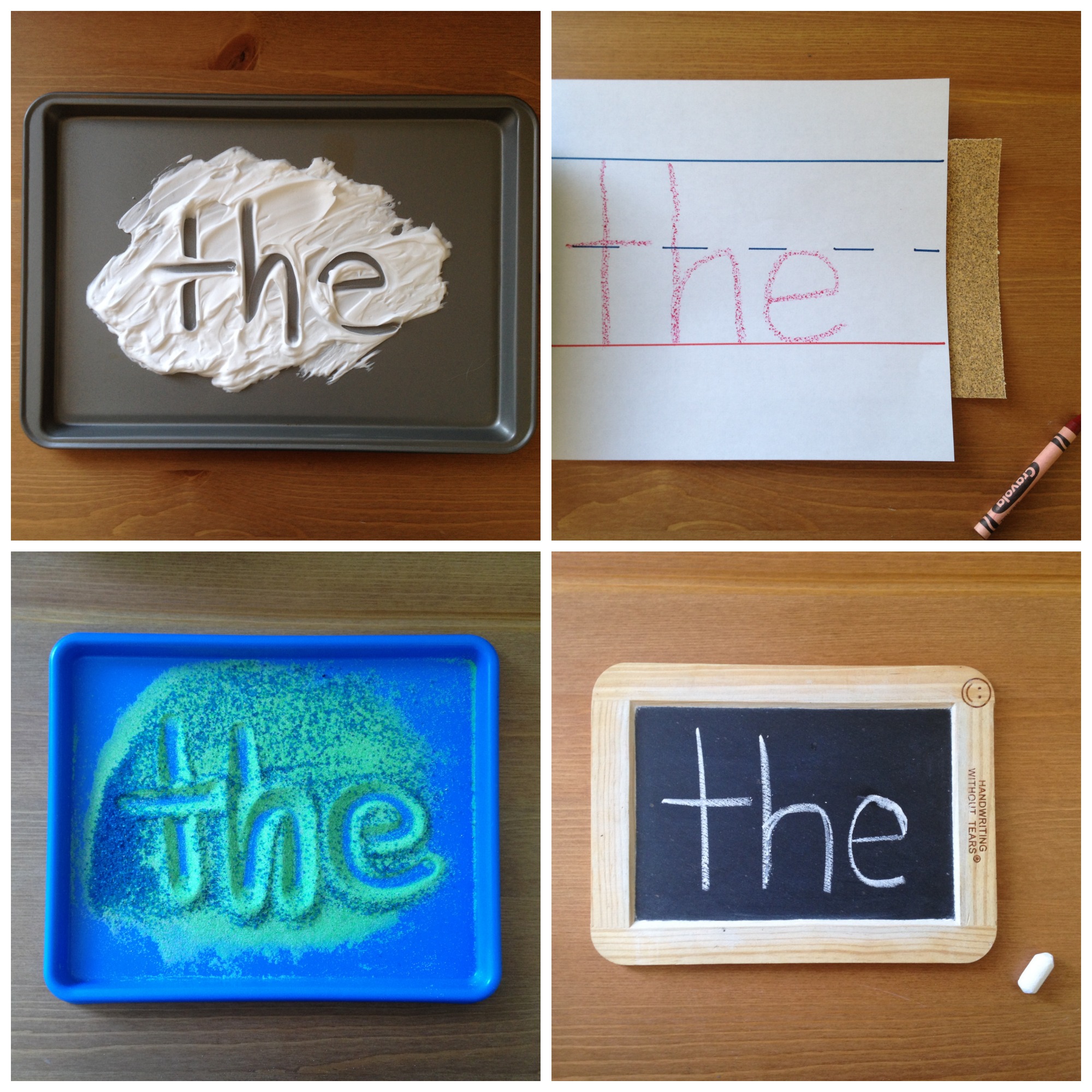Worried about future handwriting issues? Have your toddler do planks!
The Unconventional Guide to Improving Handwriting Skills (Part I): Put the Pencil Down and Get Outside
Imagination & Storytelling in Childhood: An Interview with NY Times Bestselling Author Jackie Urbanovic
“There are no mistakes… there are just experiments.” – Jackie Urbanovic
Jackie Urbanovic, New York Times Bestselling Author and Illustrator offers some powerful messages we can share with children.
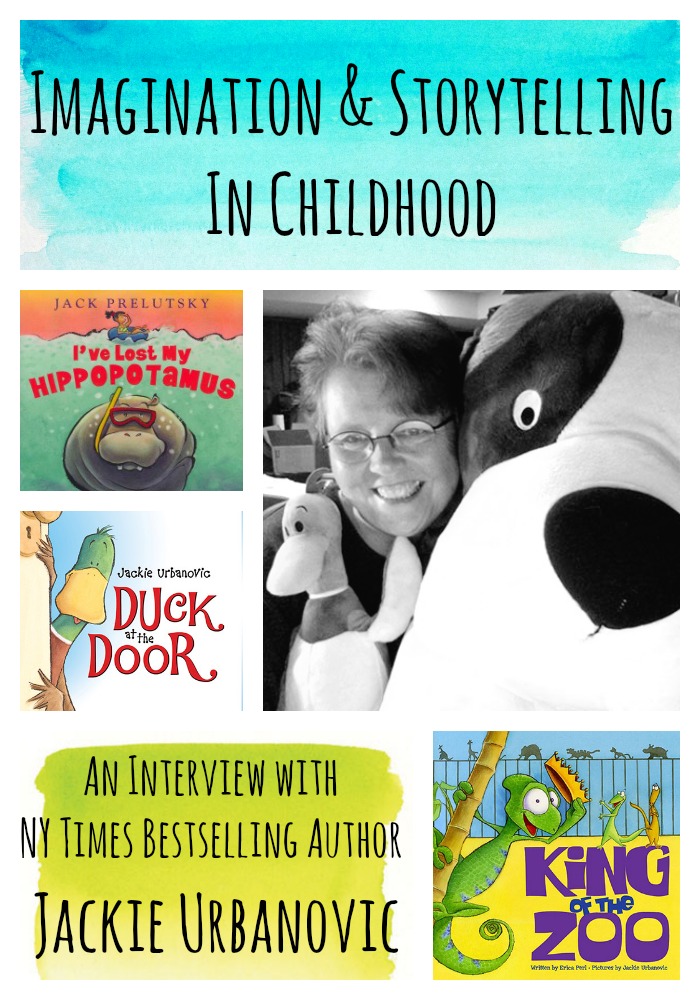
Meet Jackie! You may know her from her popular Duck series:
Jackie writes and illustrates her own children’s books as well as illustrates for other authors.
When I first began to dabble in illustration back in 2011, I discovered that this bestselling author and illustrator lived right in my backyard!
I was lucky enough to meet up with Jackie, have her critique my work and even receive some drawing lessons in her studio. Talk about inspiring!
In this exclusive interview, Jackie shares her ideas on how we can help children develop not only a love of reading, but a passion for storytelling, confidence, perseverance and compassion.
First meet Jackie as she talks about the childhood of a NY Times bestselling author and where she gets her story ideas and inspiration.
Then learn about how Jackie hopes to impact children and her advice to parents:
- How to get kids excited about reading and writing
- Why children need to write and draw their own stories
- The importance of making mistakes and problem solving skills
Besides being an artist myself, I find Jackie’s work and life story inspiring as a mother, teacher and lover of children’s books.
Meet Jackie – Where you always an artist?
“Yes. I always drew. My first memory of drawing is somewhere around 3 years old. I was never a prodigy—I think my early drawings look pretty much like any other child’s drawings.
Although—when I show some of my childhood drawings to elementary age students during my school visits, they think the drawings are amazing. This always surprises me.
I have no idea why I felt so compelled to draw, I was just born with an ongoing desire to make things. My family is full of storytellers, so I know that my desire to tell stories came from them.”
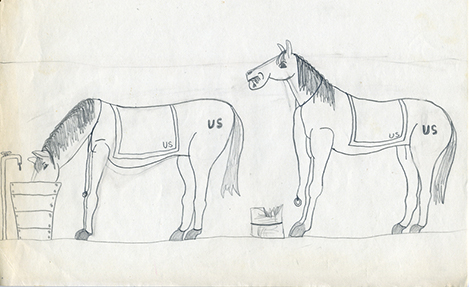
Is being an artist innate? How did you develop your skills?
“I found an art teacher on the internet, Martin Bartel. I was taken with his ideas because he sees drawing as a learned skill rather than a talent someone is born with. This goes against the common myth that only some of us have the talent to draw.
The skill of drawing is in our eyes, our ability to observe, as much as it is in our hands. Many children/people need to be taught how to observe the world around them so that they can put it on paper.
A few figure it out on their own and that makes them stand out from the rest. I guess I was one of those that figured it out on my own.
I clearly remember one day when I was maybe 13. I looked at someone’s head and noticed that the back of it was rounded. ROUNDED. In my drawings I’d always made the backs of people’s heads flat. It was like waking from a dream. It was a revelation that changed all the drawings I did from that point onward. I think of that as an example of learning to observe on my own.”
What role did your family play in your career?
“It also helped that my family saw me as an artist. They were always pleased to have one of my drawings. My Mom critiqued my drawings so I could make them better.
And my parents didn’t try to stop me from becoming a professional artist because it was financially risky. They believed in my passion and thought I should, of course, follow that path. They encouraged me to go to art school and they paid for me to attend.
I feel very lucky and blessed that my entire family encouraged me so much. It was only later in my career that I met people whose parents forbid them from pursuing art because they thought it was a crazy idea. I thought it was normal for your parents to want you to follow your dreams.”
What was your childhood like?
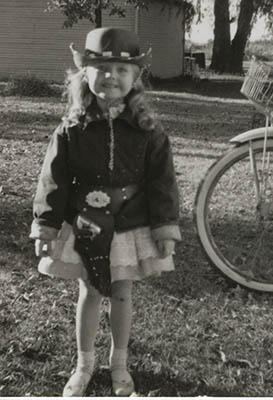
“My childhood…….We lived in a rural area, in a small village of homes that were built on the shores of Lake Erie in Michigan. I was a quiet, shy kid.
I only had a couple of friends who lived within walking or biking distance, so I spent a lot of time playing by myself.
Of course, I drew a lot. I also made up stories and playacted them. A lot of cowboys, gangsters and sometimes family dramas. When I played alone, I acted out all of the parts. I even had shoot outs with myself.
I also swam, read, drew and watched lots of old movies on television with my Mom. She adored the movies from her youth——from the silent films to the films of the 1940’s—and she introduced them to me.
My cousins from Detroit visited regularly. They were my favorite playmates. My Mother’s family were all great oral storytellers and comedians. They loved to laugh and to make others laugh. I think they inspired my desire to tell funny stories.”
Where do you get your ideas? What inspires you?
“Inspiration and story ideas are all around us all of the time. It just takes cultivating another form of observation to notice them. I take note of funny lines people say and write them down. I see an interesting name of a city or street and write it down.
I love to take walks, to explore new places. Exploring gives me ideas. When I’m in bed I sometimes think about stories as a way to amuse myself as I’m falling asleep. That’s how I came up with the idea for my story Duck Soup.
The idea for Duck at the Door and all the Max books came from a conversation about a woman named Irene who really has rescued and adopted bunches of dogs, cats and rabbits. I keep files of all of my ideas so that I can go back to them when I’m ready to make them into a full blown story.”
Jackie also talked about how sometimes she hits roadblocks. She was working on one story for a very long time, that despite many edits and revisions, her agent continued to have lots of questions and concerns about. When she finally set the story aside, another idea just “fell” into her head. This latest story Prince of a Frog will be published by Scholastic spring 2015.
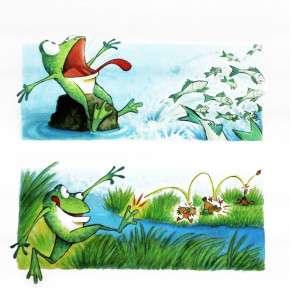
What is your advice for parents?
How can you get kids excited about reading & writing?
1. Read to your child.
“Enjoying stories as a child builds a love of reading in an adult. I’d suggest reading with your children. Let them read to you as well (or paraphrase the story for you, if they are too young to read.) Sharing stories is not only great entertainment, it really brings people close to each other.”
2. “Listen to children when they make up their own stories.”
“Listening and enjoying their stories shows them that all stories are valuable; that they and their ideas are valuable.”
3. “Just let them read.”
“As an author, I hear that parents are pushing their children to read above their level. I say just let them read. Read books under, at and above their level. Introduce them to books and characters but don’t add stress and status to it by making it a competition.”
4. Share your love of reading with your child.
“I remember my Mom telling me about when she was a teenager. She was sitting up in bed at night, reading Dracula. She was absolutely too terrified to sleep and too compelled by the story to stop reading, which made her more scared. She absolutely loved it. Her love of reading impacted me. I saw reading as valuable because she did. And she made me laugh by telling me her stories about it.”
Why is storytelling so important in childhood?
Why do kids need to write and draw their own stories?
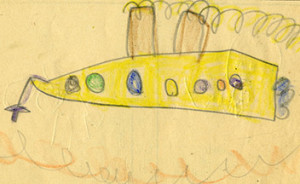
“The reality is that we are all storytellers. Human beings live and breathe stories. It’s how we learn, how we pass on our experiences, how we entertain each other.
And when we’re children, there is so much in our lives that is out of our control. We are small and others are big. Others make the decisions for us. We don’t understand a lot of what is going on with the adults in our lives.
Writing and/or drawing stories is a way to have some control over our experiences. To rewrite, to undo our mistakes. To express our fears and joys. To make each other laugh. What power! What freedom! Anything can happen in your stories.
You can write about your life or take yourself to the moon. And the bonus is that others LIKE to hear them. Storytelling comes naturally to kids. Leading them to writing or drawing those stories opens the world for them, I think. It did for me.”
How do you hope to impact children?
What do you hope people gain from reading your books?
“There are no mistakes… there are just experiments.”
“When I visit schools, I want to make the students laugh, of course. I want them to see that their ideas are valuable. I hope to show them that play and work are not so different from each other.
I want to show them that we each need to make mistakes. NEED to. Artists are like scientists. Where a scientist experiments with chemicals or DNA, artists experiment with ideas, line, color.
There are no mistakes in the negative sense of the word. There are just experiments. And with each experiment we learn something that takes us closer to the solution, whether it’s a new medicine or a great story.
And this ability to use your imagination to solve problems is a life skill we can all use. I hope they are able to take in even one of these things from my visit.”
“We can all benefit from being compassionate and forgiving.”
“If I could, I’d like to pass on the idea that we all benefit from being compassionate and forgiving. I am so pained by the needless cruelty in the world.
Being compassionate is no more difficult than being mean or thoughtless. And the outcomes are so vastly different. I hope someday I can come up with a way to show that compassion is a cool idea.”
Of all your work what are you most proud of?
What books were the most fun?
“I think the answer to both of those questions is the books I’ve both written and illustrated.

I adore creating the entire book, word and pictures both. It’s like working a puzzle to find the answer. It’s a fun problem to solve. I love tweaking the words and pictures to make them come together for a good laugh.”
What’s getting you excited these days?
“I’m reading a lot about the power of story: Joseph Campbell’s writing on Mythologies, Vivian Gussin Paley’s books about her kindergarten students and their stories, Mem Fox’s books about teaching, Jonathan Gottschall’s The Storytelling Animal.
I’m seeing how much story has impacted my life—reading stories, hearing stories, writing and drawing stories. Creating a story is first of all fun. But it also becomes a form of therapy because you re-examine your own life to find more ideas.
I’m writing a story about myself and my father right now. It’s the first time I’m trying to write a serious story and it’s a challenge. I do hope it is published someday, but even if it isn’t, the remembering, the writing, the forgiving involved, is enough.
I am changed by every story I write, whether or not it is ever published.”
Interested in Meeting Jackie?
In addition to being an author and illustrator, Jackie does presentations for libraries, schools and conferences. Want her to come to your school? Visit her website or send her an email.
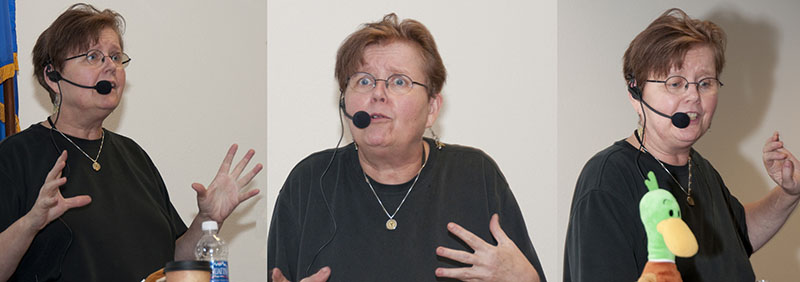
Thank you so much for sharing Jackie! I look forward to reading your new book coming this Spring 2015 – Prince of a Frog
Beyond Flashcards: How to Teach Sight Words Creatively
“Sight words are boring!”
They certainly can be… but they don’t have to be.
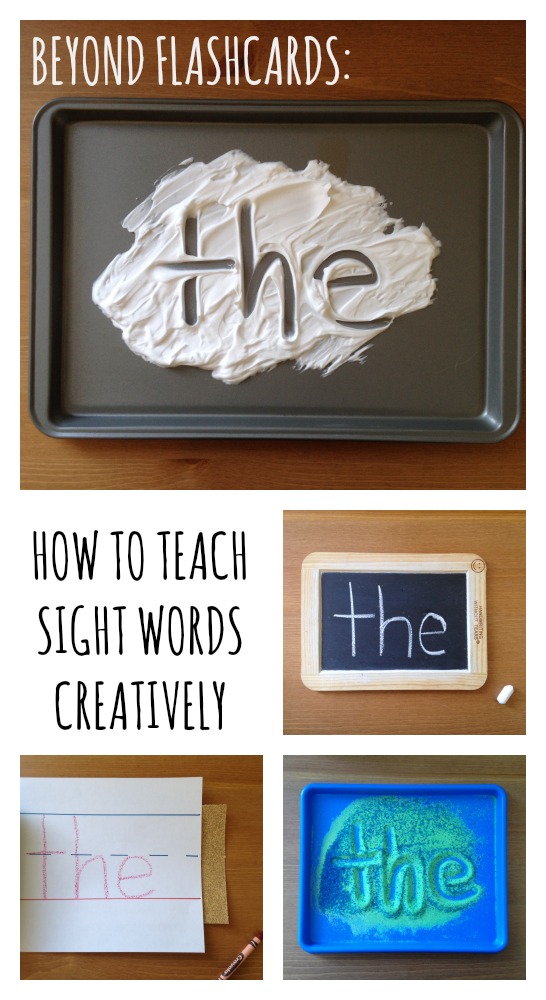 When children are learning to read a huge emphasis is placed on the alphabet – working on letters and their corresponding sounds (think phonics).
When children are learning to read a huge emphasis is placed on the alphabet – working on letters and their corresponding sounds (think phonics).
However, another very important component of developing a successful reader is learning sight words.
You may know them by many other names such as dolch, fry, high-frequency, trick, snap, red, and word wall words.
Google any of these words and you’re sure to come across lists upon lists of words.
My goal is not to provide you with yet another list of words, but to answer the important questions:
- What are sight words?
- Why are they important?
- What effective methods can I use to make sure my child learns these words?
- How can I make sight words fun and engaging?
I’ll show you why these words are so important (and why they’re called so many things!) and how to teach sight words in a way that’s fun for your child (and you) and effective.
What Are Sight Words?
Children are taught how to read by learning to recognize symbols (letters and group of letters) and associating them with sounds (phonemes). Students can then sound out words and have a strategy to figure out unfamiliar words that they come across – phonics!
However, alongside this approach children also learn to memorize certain words to facilitate their fluency as a reader. These are called sight words. Students memorize these words for a variety of reasons:
- they are irregular – don’t follow phonics rules – and cannot be sounded out (of, the, was)
- they commonly occur in books (he, to, are, that, have) so knowing them instantly will
- save a child time when reading by not having to “figure out” frequently occurring words
- allow a child to read a significant % of books/texts by knowing only a handful of words
There is not one list of words that your child must absolutely know (see below), but most educators would agree on the vast majority of words students should learn and in roughly the same order (simple to complex words).
Are They Sight Words or Dolch Words… or Wait, High-Frequency Words?
As mentioned above, sight words can be called by many different names. What you call them is up to you, or your child’s teacher, or the reading program that your child’s school is following.
Many teachers use the Word Wall in the classroom (literally a physical wall with word cards stuck on it) for sight words so they become “word wall words.”
Other teachers emphasize the important of knowing these words quickly – in a snap! – hence the name “snap words.”
The Orton-Gillingham (OG) reading program calls these “red words” because they do not sound out. The red alerts the student these words cannot be sounded out. The reader/writer must draw from his or her memory on how to read/spell them. These words are usually displayed in red in the classroom.
The Wilson’s FUNdations reading program calls these “trick words.” Similar to OG, Wilson’s list of words are ones that are irregular and cannot be sounded out. They don’t follow the rules so they can be very tricky!
The Dolch and Fry words are both high-frequency word lists, meaning the most common words that children are likely to come across when reading. They happen so often, it’s best just to memorize them. The lists are usually organized by grade or level so children can work on the list most appropriate to the books that they are reading.
The Dolch list dates back to 1936 (and has remained unchanged) compiled by Dr. Edward William Dolch. There are two main lists – the more common 220 word list and the 95 word nouns list. The 220 list is organized by grade level (pre-primer to 3rd) so children can work on the list most appropriate to the books that they are reading.
In 1996 Dr. Edward B. Fry updated Dolch’s list and created the Fry 1000 Instant Words. These words are divided into groups of 25 based on frequency. His research concluded that 25 words make up 1/3 of all that is published, 100 words make up 1/2, and 300 words make up 65% of all words published. So if students know the first 300 Fry words, they’re in pretty good shape.
That’s probably more than you wanted to know, so…
Which List is the Best? Which Should I Choose?
The bottom line is – it doesn’t matter. If you’re a parent, stay consistent with whatever your child’s school or teacher is using. Email your child’s teacher for a copy of the list if he or she hasn’t already given it to you.
If you’re a teacher, make sure the list you use (and the order you introduce the words) matches what the other teachers at your grade level are using. In addition, make sure your school has a systematic progression of sight words throughout the years – collaboration between grade levels is also key.
If you’re a tutor, teacher, home-school educator, or are looking to supplement whatever you’re child is learning at school (maybe the list of words at school is too easy or progressing too slowly for your child) below are my suggestions when choosing sight words.
When working with kids with reading difficulties, I always try to make my work compliment what is going on at the child’s school. However, that being said, what the school is using may not always be the best for a particular child. So frequently I am coming up with different sight word lists to help my students.
Here is my method for deciding what words are important:
1. Irregular Words
Because I usually work with students with language based disorders (such as dyslexia), I place a huge emphasis on phonics. Therefore, if a word does not sound out, I want the student to memorize it and know it immediately.
The student needs to differentiate these words from others and not waste valuable time trying to sound out a word that does not make sense. Words like “of,” “the,” “was,” and “said” are high priority in my lists.
2. Two-Letter Words
If a child is constantly trying to figure out two-letter words, he will never achieve fluency. Imagine how tedious it must be for a child to have to work to figure out every single word on a page every time she’s reading – not to mention discouraging. Whether they sound out or not, students should be able to immediately read two-letter words (he, we, to, at, in, go, on, my).
In addition, learning to recognize these words often helps students see these words inside of bigger words. This helps them to “chunk” words and have greater success (and confidence) figuring out longer words. Knowing “at” helps a child read “cat,” “bat,” “fat,” etc.
3. High-Frequency Words with an Individual Twist
I fill in the rest of the words on my list with other high-frequency words moving from simple to complex (shorter to longer words). In addition, I take into account what the student likes to write about. If a word is constantly coming up in a student’s writing (often “went” is a popular one as students write journal entries about past events) I include that on the word list.
When I work with students, sight words are more than just fluency in reading but also fluency in writing. I make sure students not only recognize and read these words instantaneously, but also spell them correctly without thinking twice.
Now that you know what sight words are all about the question is…
How to Teach Sight Words?
There’s no way around it. Kids need to memorize sight words. I’ve got lots of fun sight word activities for you, but sight words first need to be introduced in a clear, systematic way.
How to Introduce New Sight Words: Techniques That Work
Simple Assessments: What Words Does the Child Know?
Once you’ve decided on a beginning set of about 25 words, the first step is to find out if your child knows them already. Cycle through each word one at a time and have your child read the card.
You can easily write words on 3×5 index cards, or you can quickly type and print them on the editable PDF I use to make sight word cards for all my students (and more free resources) by clicking here.
If your child…
- Reads the word immediately – in 1 second – discard the word because your child knows it.
- Does not read the word in 3 seconds, tell him the word and put in a save pile.
- Does not read the word immediately but in under 3 seconds, put in the save pile.*
*Your child may master this word very soon but until your child can read it without thinking about it, you should still be working on that word. The goal of sight words is to read them automatically, saving students mental energy for more difficult reading tasks.
Repeat the steps above periodically to assess which sight words your child has mastered and know when to move on to new words. You can also hang on to the words your child has mastered and move on to learning to spell these words.
Introduce Only 3 New Words At a Time
If you’re trying to decide how many sight words to introduce at once, it’s always better to err on the side of less. It’s better for a student to really know a few words well than be exposed to a lot of different words but have trouble remembering them.
In Kindergarten, we teachers found it best to introduce one word a week with a total of 25 words for the school year. This is less than many other schools; however, our students were expected to read and spell these words correctly without hesitation – and this turned out to be a attainable goal for 90% of the students.
Try introducing 3 new words a week. If this seems to much – your child is having difficulty reading them in less than 3 seconds at the end of the week – scale back. The more exposure the child has to the word – especially reading in context – the faster she will master the word.
Separate Similar Looking Words (has/had; come/came)
Do not introduce visually similar words at the same time. This is most important for students with language-based disorders or any child who is showing difficulty visually discriminating between different letters.
For example, I had one student who easily confused “a” and “o” and often sounded out words in the wrong order “cat” would be “tac” or “act.” Help the student master one word first before introducing another that looks just like it or she’ll constantly be confusing the two.
However, once both words are introduced – say “has” and “had” – do expose the child to these words at the same time so she practices discriminating between the two.
Teach the New, Review the Old – in Under 3 Minutes!
Everyday, or however often you work with your child or student, review the sight words. Hold up the flashcard, say the word, then have the child repeat the word.
Then place the word cards on the table. Say one of the words and have your child find and point to that word.
Finally, pick up the pile of words and cycle through them again this time having the child say the word without your help. However, like the assessment, if the child does not say the word within 3 seconds tell him or her and move on.
Prominently Display the Words
Make sure the words are available for your child to see everyday. I always put up a HUGE poster (2’x3′) of the week’s word in the classroom.
In addition, it was on the classroom door – “This week’s word!” – and on the Word Wall. Children were sent home with magnets of the words to post on the refrigerator for reference and play!
Now for the Fun! – How to Teach Sight Words Creatively
 I’m a huge proponent of multi-sensory approaches when it comes to teaching. Not only is it fun for children but the more senses you engage the better a child will learn something and commit it to memory. Below are some of my favorite activites to practice sight words with children.
I’m a huge proponent of multi-sensory approaches when it comes to teaching. Not only is it fun for children but the more senses you engage the better a child will learn something and commit it to memory. Below are some of my favorite activites to practice sight words with children.
Write the Word in New Ways
Whenever writing sight words – no matter the medium – have the child say the name of each letter as he spells it. Have him underline the word when he is done, saying the name of the word. “t,” “h,” “e,” (as he writes the letters)… “the!” (as he underlines the word.
In addition, always write the words in lowercase. Children will rarely ever see (or write) these words in capital letters so it’s not very helpful to practice them that way.
Kinesthetic
These activities are perfect for those rambunctious youngster who can’t sit still. It’s also a great way to wake up the brain after sitting and helps kids work on crossing the midline.
1. Sky Writing – Stand up and extend your dominant arm all the way out in front of you. Pointing with two fingers, spell the word in the air starting from the left side of the body all the way to the right. Make the letters at least two feet high!
2. Side Walk Chalk – Write really big sight words on the sidewalk, driveway or playground.
3. Easel Painting – Standing at a large easel, make a separate painting for each letter of the sight word. Making these large brush strokes is fantastic for crossing the midline.
Tactile/Fine Motor Development
Write the word with your finger in…
- colored sand on a plastic lunch tray
- shaving cream on a cookie sheet
Write on different surfaces with different writing utensils…
- chalk on a chalkboard
- dry erase markers on a whiteboard
- crayon on paper overtop a piece of sandpaper
Create the Word Out of Different Materials
Create large (8.5″x11″) laminated sight word cards with bolded letters – like a placemat. Then choose your medium and have the student form the letters of the sight word on top of the card.
1. Play Dough – Buy or make your own – I definitely think homemade is the best!
2. Wikki Stix – These fun sticks are reusable and great for helping strengthen fine motor skills.
3. Model Magic – After making the word, let the letters dry and save them in a plastic bag with the sight word card. At a later time, have the student open the bag and spell the sight word by correctly arranging the letters.
Don’t have access to a laminator? You could:
- Go to FedEx Office. They have easy to use laminating sheets.
- Write on a piece of 8.5″x11″ paper and put in a clear sheet protector
- Write on an index card and cover with clear packing tape
Play Games
Here are some fun twists on the traditional flashcard. These activities require some knowledge of the sight words and are a great way for kids to practice what they know and for adults to assess their knowledge.
1. Go Fish – Make playing cards for 26 sight words in sets of two (52 cards total). Write on index cards or print your own – get the easy sight word card maker PDF here – on cardstock. Make sure you cannot read through the cards by using either thick, colored paper or a light colored font or pencil. Play by traditional Go Fish rules.
2. Memory – Make playing cards for anywhere from 5 to 20 sight words – remember to make 2 cards for each word. Write on index cards or print your own. Again, make sure you cannot read through the cards by using either thick, colored paper or a light colored font or pencil. Make a uniform array of cards face down
3. Bingo – This game is great for students who already have a good base of sight words memorized. Choose at least 24 words. Write or print a drawing stack of cards. Then create your own bingo cards. Need help? Get the free easy Bingo card creator! Use pennies, paper clips, or small toys for chips.
Let Me Make it Easy for You!
Click here to get free access to the sight word flashcard creator and easy bingo card creator – plus many more freebies! Or play around with sight words on our free app Ollie’s Handwriting & Phonics for iPad.

